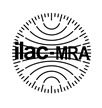There are occasions when a healthcare patient develops an infection that occurred during their stay in hospital or an outpatient centre. These are known as nosocomial infections or hospital-acquired infections (HAI), the prevention and control of which has become one of the major concerns of preventive medicine and public health.
What are the most common nosocomial infections? Mechanisms of infection.
According to the WHO, the most common nosocomial infections are urinary tract infections, respiratory tract infections, surgical site infections and bacteraemia or catheter-associated infections.
According to the results of the Spanish study EPINE 2023, urinary tract infections are now the most common nosocomial infection, accounting for 20.60% of the total, and more than 80% of these are caused by the use of an indwelling urinary catheter, with the patient’s own microbiota as the source.
On the other hand, respiratory tract infections are the second most common site of nosocomial infections (20.12%), closely followed by urinary tract infections.
The most common causes are hospital-acquired infections associated with ventilator use (such as nosocomial pneumonia) or non-intubated exposures such as viral bronchiolitis, influenza or secondary bacterial pneumonia.
Surgical wound infections are also common and are usually acquired during the operation itself, either exogenously (airborne, from medical devices, etc.) or endogenously, i.e. from the skin flora or the surgical incision.
Major microorganisms involved in nosocomial outbreaks
The most common microorganisms and pathogens that cause nosocomial infections are viruses, bacteria, fungi and other pathogens that use different modes of transmission to spread.
Hospital-acquired infections are mainly caused by contact with 3 possible sources: contact with the patient’s own microbial flora, contact with pathogens present in other patients or healthcare workers, and finally contact with pathogens found in the hospital environment.
Endogenous or commensal transmission
The pathogens commonly involved in endogenous nosocomial infections are bacteria such as Escherichia coli (E.coli), Staphylococcus aureus, Staphylococcus epidermidis, Klebsiella pneumoniae or the fungus Candida spp.
They are usually transmitted through the insertion of urinary or venous catheters and can cause skin and tissue infections, systemic infections and pneumonia in mechanically ventilated patients.
Exogenous transmission from the hospital environment
Hospital-acquired exogenous infections include contact infections that are transmitted directly or indirectly between the source and the recipient, as well as through airborne respiratory droplets.
The main pathogens involved in exogenous transmission through contaminated surfaces are methicillin-resistant Staphylococcus aureus (MRSA), Pseudomonas aeruginosa, Enterobacter spp. or Candida spp.
Viruses such as Influenza, SARS-CoV-2, opportunistic filamentous fungi such as Aspergillus spp. and others such as the Rhizopus spp. family and yeasts such as Fusarium spp. or Penicillium spp. use airborne particulate matter to spread and transmit.
For this reason, whenever a hospital is due to be renovated or rebuilt -which is very common given the ageing of hospital infrastructures- and since this is the main source of dust in hospitals, the Spanish Society of Preventive Medicine, Public Health and Health Management suggests, among other measures, monitoring the indoor air as a preventive measure, in addition to controlling dust emissions on construction sites.
Measures to prevent the transmission of HCAI
The prevention of healthcare associated infections (HCAI) is an exceptional opportunity for intervention to ensure the safety of patients during their stay in hospital.
Preventing and controlling the transmission of these infections requires a combination of different measures and requires a programme that is kept under constant review, including the control of environmental infection risks and ensuring good practice in sterilisation, disinfection and hygiene of personnel, surgical equipment and facilities.
The most common measures include:
- Hand hygiene by healthcare workers before and after each patient.
- Cleaning and disinfection of surfaces, especially in high-touch areas and patient rooms.
- Sterilisation of reusable medical devices.
- Adequate isolation of infected patients to prevent the spread of pathogens to other patients and staff.
- Appropriate use of gloves, gowns, masks and other PPE as required.
- Environmental control and monitoring of air quality in critical areas.
- Ongoing training of healthcare staff in preventive techniques.
- Proper handling of biomedical waste and potentially contaminated materials.
Either directly or indirectly, air is one of the main means of spreading nosocomial infections. The Nanoenvi IAQ air quality monitor with its specific platform for hospitals DustControl, makes it possible to monitor parameters associated with the transmission of nosocomial infections in the hospital environment, so that the environmental conditions remain as sterile as possible.
Bibliographic references
- Asociación Española de Ingeniería Hospitalaria. Bioseguridad Ambiental en la ejecución de obras hospitalarias. 2013. https://aeih.org/wp-content/uploads/2019/04/Bioseguridad-Ambiental-en-la-ejecuci%C3%B3n-de-obras-hospitalarias.pdf
- Astier P, Gost J, redín JM, Manrique A, Lameiro FJ, Echeverría JM. Programa de minimización de riesgos biológicos asociados a la infraestructura hospitalaria: Funciones, actividades, responsabilidades [Internet]. Vol 23, Anales del Sistema Sanitario de Navarra. 2000. https://dialnet.unirioja.es/servlet/articulo?codigo=6586004
- Bartley J. APIC State-of-the-Art Report: The role of infection control during construction in health care facilities. 2000. https://www.sciencedirect.com/science/article/abs/pii/S0196655300900245
- Ducel G, Hygie F, Fabry SJ, Perraud M, Edouard Herriot H, Prüss FA, et al. Prevención de las infecciones nosocomiales GUÍA PRÁCTICA 2ª edición. Organización Mundial de la Salud. 2002. https://iris.who.int/bitstream/handle/10665/67877/?sequence=1
- Department of Health US, Services H, for Disease Control C. Guidelines for Environmental Infection Control in Health-Care Facilities Recommendations of CDC and the Healthcare Infection Control Practices Advisory Commitee (HICPAC). https://www.cdc.gov/infectioncontrol/pdf/guidelines/environmental-guidelines-P.pdf











